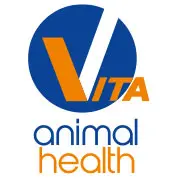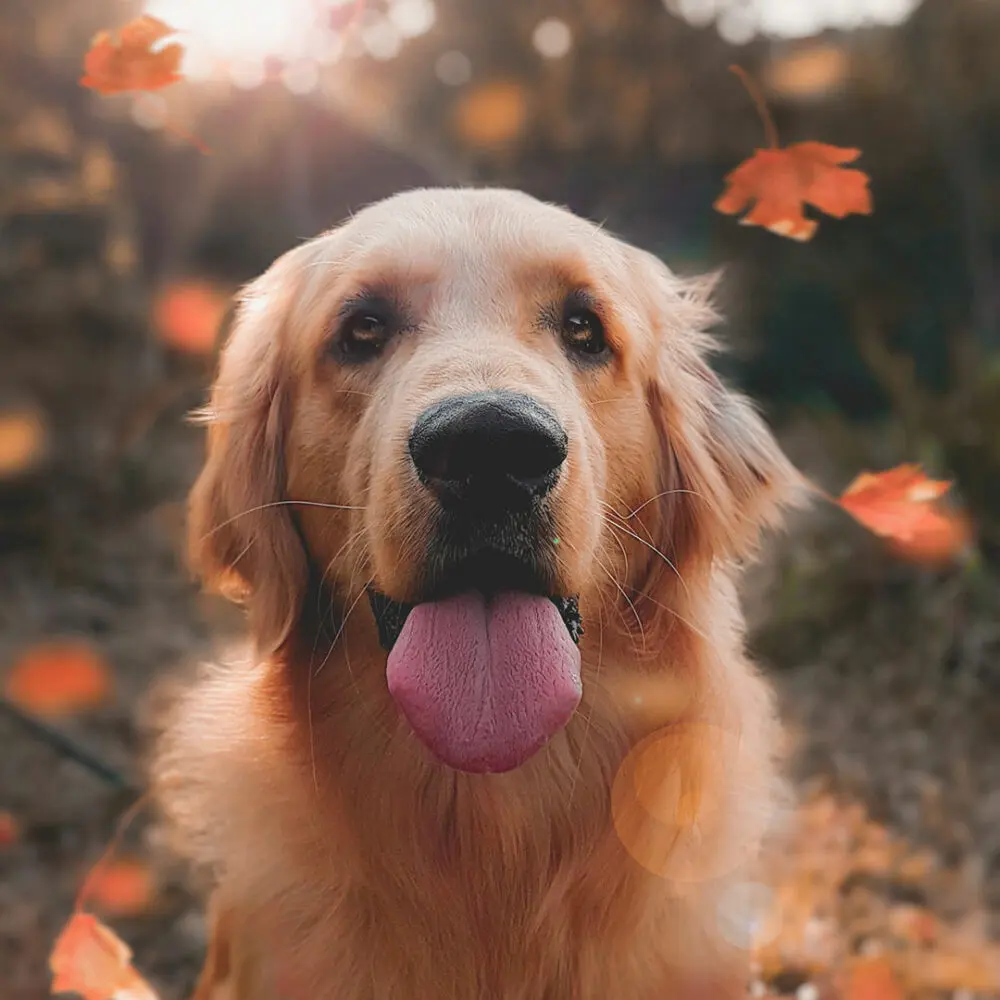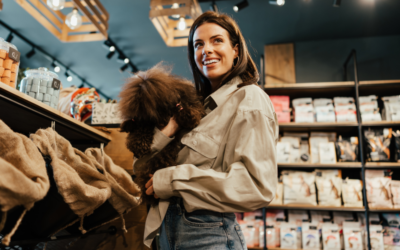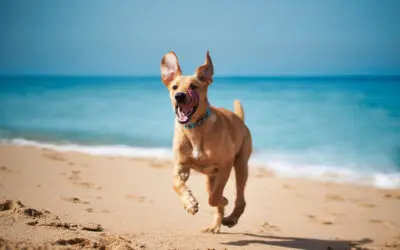As the seasons change and we move into autumn and winter, there are some common hazards it’s worth being aware of. Taking appropriate precautions can help to keep autumn fun for the whole family, including your pets. We’ve summarised some of the most common hazards along with top tips to avoid them and keep your pets happy and healthy this autumn.
1. Darker nights call for something bright
As the nights draw in and evenings (and early mornings) become darker, keeping pets safe from vehicles and ensuring you can spot them easily is more important than ever. Reflective collars and harnesses can play a major role in keeping your pets safe, while light up collars for dogs take this to the next level. Make sure that whoever walking the dog is also wearing clothes which are highly visible. Off lead exercise is best kept for daylight hours, but a long lead in appropriate areas can help to give your dog more freedom while keeping them safe.
2. Spooky season doesn’t need to be scary: stay safe on Halloween
Halloween can be an exciting time for the whole family, but there are some specific hazards to be aware of. Chocolate toxicity is a common concern so making sure children don’t share their treats with pets is crucial, but it’s also important to make sure they don’t get their paws on other potentially toxic items like glow sticks. If your pet does eat something they shouldn’t, you should speak to your vet as soon as possible to determine if treatment is needed.
Keeping an eye on your pets and being aware of their body language is also vital: while some may enjoy playing dress up, others can become distressed or overwhelmed by costumes or excited children.
Finally, it’s worth keeping cats indoors over Halloween, and keeping your dog on-lead. The noise and commotion of trick or treaters can be frightening and could cause your pet to panic and put themselves in harm’s way.
3. Help your pets manage their firework fears
For many pets, the scariest part of autumn has nothing to do with Halloween. Fireworks can cause anything from mild anxiety to severe distress, but there are some things you can do to help.
First, pets should always be kept indoors or on a lead when fireworks are expected; in addition to the physical danger posed by fireworks, including scavenging of debris, they may also panic in response to the noise.
Secondly, it’s important to take measures to keep them calm at home. Keep windows closed, remain calm yourself and play some background noise, whether it’s soothing music or the TV. Creating a safe space, whether it’s a covered crate, hiding spot under a bed or a den on the sofa, can help to ease many pets’ fears, while distraction with toys and snuffle mats may also help. For some pets, it may be worth discussing calming supplements or even medications with your vet. Longer-term, desensitisation training can help to manage noise phobias.
4. Ticks: the real Halloween monsters
Most active in spring and autumn, ticks are a common parasite of dogs and cats. Risky locations include heathland, woodland, areas with long grass, and places frequented by wildlife and farm animals.
Ticks in the UK can transmit infections like Lyme disease, but usually need to remain on your pet for several hours to do so. You can use parasite products that kill ticks, but these usually take 24-48 hours to kill a tick, so checking your pet after walks and removing ticks as soon as they’re spotted can help to reduce the risk of disease transmission. Sticking to paths and open spaces can help to avoid ticks, but if you live in a high-risk area you may want to discuss repellent products with your vet.
5. A (wasp) sting in the tail
As the warmer weather fades, it’s not just ticks that become more active; wasps also spend more time foraging in the autumn months. Keeping your pet away from fermenting fallen fruit can help them to avoid a nasty sting.
Wasp stings in pets typically cause some mild swelling and discomfort but resolve within a couple of days; however, some pets may show more severe symptoms and require veterinary attention. If your pet is stung in the mouth or throat, has been stung multiple times or shows signs of an allergic reaction like facial swelling or breathing difficulties, you should see a vet urgently.
6. Pumpkin spice or something not so nice…
Autumn flavours are hugely popular, but unfortunately for our pets there are several potentially hazardous items. Common examples of so-called ‘dietary indiscretion’ in autumn include:
- Conkers: these are bitter so are usually only eaten by particularly inquisitive or greedy dogs. They contain aesculin which can cause symptoms ranging from abdominal discomfort, vomiting and diarrhoea to weakness, collapse or even death. Conkers also pose a choking risk and can cause gastrointestinal obstruction.
Keeping dogs distracted with toys and chews on walks can help to avoid conker ingestion, but if your dog does eat any you should contact your vet for advice. - Acorns: these nuts are also poisonous, containing tannins and other compounds which can cause symptoms ranging from a stomach upset to liver and kidney injury or even death. Again, gastrointestinal obstruction is also a concern. Contact your vet as soon as possible if your dog eats acorns.
- Fallen fruit: many dogs will eat fallen fruit in autumn, and it may result in nothing more than an upset stomach. However, in some cases fermentation and growth of mould can pose a more significant risk. Consuming large amounts of the seeds or stones of some fruits may also cause toxicity or gut obstruction.
- Mushrooms and toadstools: just as these can be toxic to humans, they can also have a range of toxic effects in dogs, some of which can be very severe or even cause death. If you notice your dog eat any wild mushroom, you should contact your vet immediately for advice.
- Rat and mouse poison:these are often put down in the cooler months as rodents move indoors, increasing your pets’ chances of consuming either the poison itself or rodents that have been exposed. The toxins are usually anticoagulants, resulting in weakness, signs of bleeding, bruising and breathing difficulties. Emergency veterinary treatment is necessary for any pet that’s ingested rat or mouse poison, even if they’re not yet showing signs. Taking the packaging with you if it’s available can help your vet to determine the best treatment.
- Spring bulbs: often planted in autumn, these can cause a range of toxic effects so it’s worth keeping your pets well away.
7. Seasonal Canine Illness
This relatively rare condition is something to keep on your radar in autumn. Its cause is unknown but it typically affects dogs shortly after walking in woodland between August and November, causing gastrointestinal symptoms, pain and muscle tremors. These symptoms overlap with many other conditions, but if you notice your dog become acutely unwell – especially after a woodland walk – it’s worth seeking urgent veterinary attention.
8. Autumn for arthritics
Finally – and much more commonly – autumn is also the time when many older pets start to struggle more with arthritis. The symptoms of this common condition can be very subtle and are often chalked up to old age, with affected cats and dogs seeming just a little slower or stiffer than usual, or sleeping more and exercising less.
Cold weather and slippery surfaces can see pets start to struggle more, so it’s important to keep an eye on your them and speak to your vet if you suspect there might be something wrong. There are many changes you can make to support your pets’ joints, including avoiding slippery floors, minimising jumping and supporting your pets’ joints with supplements like Omnicondro and Omniomega.
Find out more about arthritis in dogs and cats.





0 Comments